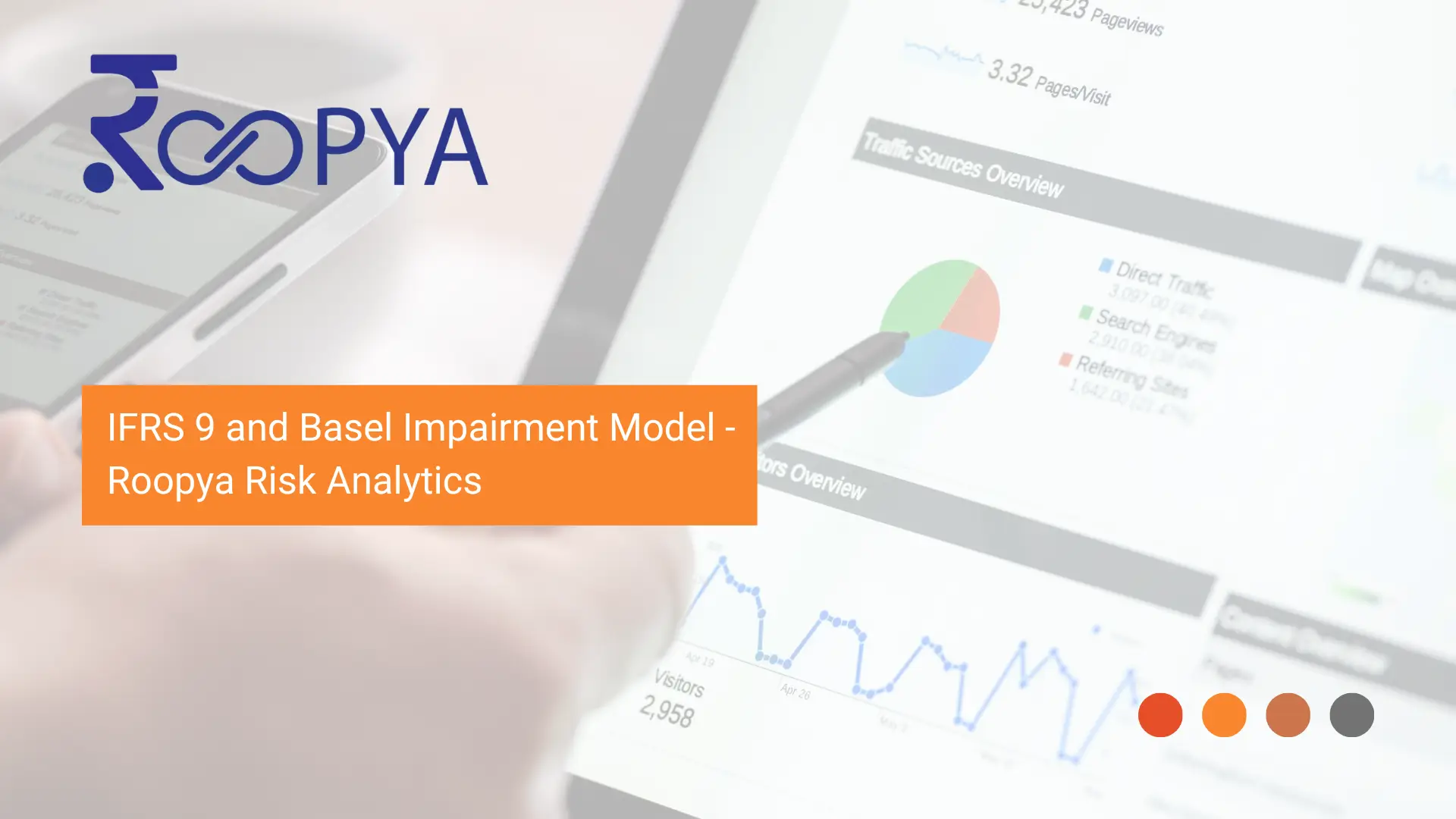IFRS 9 and Basel Impairment Model – Roopya Risk Analytics

The International Accounting Standards Board (IASB), in collaboration with other standard-setting entities, establishes principles-based regulations for banks on the acknowledgment and provisioning for credit losses in financial reporting. July 2014 marked the issuance of International Financial Reporting Standard 9 – Financial Instruments (IFRS 9) by the IASB, introducing the “expected credit loss” (ECL) model for impairment recognition. This document presents a detailed overview of the ECL approach as defined in IFRS 9, and examines its influence on the treatment of accounting provisions within the Basel capital framework, focusing on regulatory implications.
Start Free Trial
Roopya collects and consolidate data from various sources relevant to IFRS 9 risk modelling, such as loan contracts, customer information, internal ratings, and external data sources. This helps ensure data accuracy and consistency for model development and calculations.
The impairment model based on the International Financial Reporting Standard 9 (IFRS 9) and its interaction with the Basel capital framework plays a crucial role in the global financial system for several reasons:
- Early Loss Recognition: The expected credit loss (ECL) model under IFRS 9 requires financial institutions to recognize potential credit losses earlier than the previous model. This forward-looking approach necessitates the consideration of future economic conditions and their impact on loan portfolios, allowing banks to set aside provisions for potential losses before they actually occur. This early recognition helps in mitigating the risk of large, sudden write-offs, which can destabilize the banking sector and the broader economy.
- Financial Stability: By encouraging banks to proactively manage their credit risk exposure, the ECL model contributes to the overall stability of the financial system. It prevents the excessive accumulation of unrecognized credit losses on banks’ balance sheets, which was a significant problem during the 2008 financial crisis. Through timely loss recognition, banks are better equipped to absorb shocks, reducing the likelihood of bank failures and systemic crises.
- Risk Management: The implementation of the ECL model under IFRS 9 enhances risk management practices within financial institutions. Banks are required to use more sophisticated credit risk assessment models that consider a wider range of information, including macroeconomic forecasts and their potential effects on credit risk. This improves the banks’ ability to understand and manage their risk exposures effectively.
- Regulatory Capital Adequacy: The Basel capital framework, which sets out the minimum capital requirements for banks, is aligned with the principles of IFRS 9 to ensure that banks hold adequate capital against their credit risks. The integration of IFRS 9 into the Basel framework ensures that the regulatory capital reflects the economic reality of the banks’ financial positions, enhancing the resilience of individual banks and the banking sector.
- Transparency and Investor Confidence: By requiring banks to disclose more information about their credit risk exposures and how they estimate credit losses, the ECL model improves transparency in financial reporting. This increased transparency helps investors, analysts, and other stakeholders to better assess the financial health of banks. In turn, this can lead to greater investor confidence and a more stable banking sector.
Banks governed by IFRS 9 typically also fall under the Basel III Accord’s capital requirements. To determine credit risk-weighted assets, they utilize either standardized approaches or internal ratings-based methods. The recent provisions introduced by IFRS 9 will affect the profit and loss statements, which must then be considered when calculating impairment provisions for regulatory capital purposes. The systems required to compute and report on the expected loss and its impact on capital adequacy are already established. The data, methodologies, and procedures currently employed within the Basel framework may, to some extent, be adapted for modeling provisions under IFRS 9, though significant modifications are necessary.
One of the most significant transformations introduced by IFRS 9 is the integration of credit risk data into the accounting and financial reporting processes. This necessitates a novel form of collaboration between the finance and risk departments within an organization, which will subsequently influence the management of data. The adoption of the IFRS 9 impairment model revises the existing methodologies for defining, utilizing, and overseeing risk and finance data analytics across an institution. However, IFRS 9 isn’t the sole catalyst for this shift. Recommendations from the Basel Committee, guidelines and consultation papers from the European Banking Authority (EBA), along with specific regulatory initiatives like stress testing and the Internal Capital Adequacy Assessment Process (ICAAP), are compelling organizations to adopt a more forward-looking and data-centric stance in both risk management and financial reporting.


